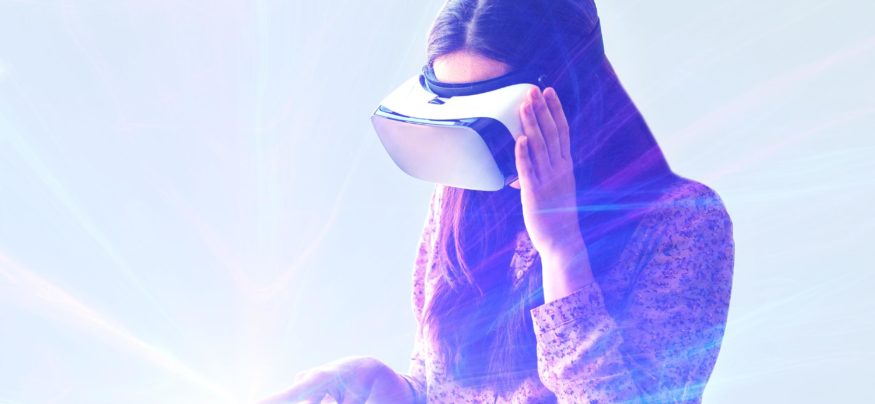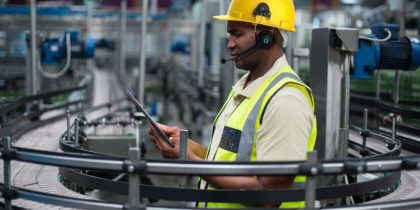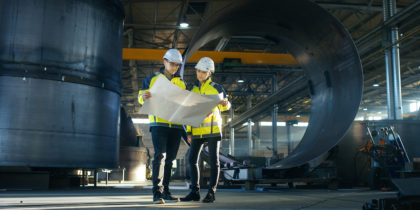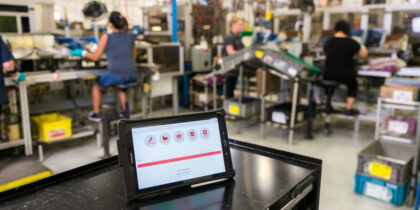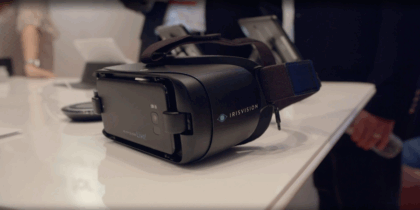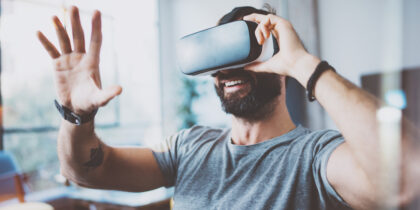Raconteur looks at the key differences between AR and VR in the learning environment. Looking to fund a VR pilot in your school? Download our guide to ed tech funding. —Samsung Insights editorial team
Personalized education is not a new concept. Before the technological revolution, the British educational system provided teachers with a great level of autonomy regarding the issues of what and how to teach. This system was based on the notion that the educational methods must be similarly tailored and similarly flexible to the particularities of the student. The educators measured the achievements of each student against national standards and pushed them to progress in line with their abilities and age.
What we have today, however, is much different. Augmented reality and virtual reality, in particular, give us a chance to enhance the level of personalisation to an extent we’ve never experienced before. The previous system was flexible, but all students still had to learn from the same textbooks and meet the same standards. With this technology, we’re finally getting close to meeting the promise of custom-tailored education for each individual.
Defining the Concepts
Before we proceed with the explanation on how augmented and virtual reality impact personalized learning, let’s define the concepts in the clearest manner possible.
Personalized learning is an instructional approach optimized for the needs of an individual learner. The objectives are tailored in accordance with the learner’s aspirations, and the instructional content and approaches are crafted in accordance with those objectives.
Augmented reality blends the real environment with a digital setting. Materials that are part of the real setting, such as textbooks, paper, posters, and different objects, trigger instructions in the digital environment. The students simply point the device to the object, and they access a new layer of knowledge.
Virtual reality is a computer-generated simulation of a 3D environment. It requires special equipment, which comes in the form of a headset. For the educational sector, virtual reality is an expensive investment. However, its advantages are immense because it simulates real-world environments. A survey among U.S. elementary school educators showed that 93% of teachers believed their students would be thrilled to use virtual reality, and 83% said they believed this technology would improve learning outcomes.
The Challenge of Personalised Learning
The goal of personalized learning is incredibly challenging in a classroom setting. The students’ achievements are still measured against national standards, so it’s impossible to allow one to make progress in arts while neglecting math.
In order to develop a proper teaching approach, the educators have to measure and control too many variables and make too many decisions. That’s what makes this concept incredibly overwhelming. The designers of personalised learning systems are focused on reducing the variables to a reasonable extent, so they will be able to control the environment and predict the outcomes.
This is where AR and VR get into the picture. The ideal of fully personalised education for each student is still a long way off. However, with the help of these technologies, we achieve more immediate engagement of the learner. The students get to “feel” the concepts they are learning of, so it’s easier for them to remember and express what they learned.
If we look into the future, a high-school student might be able to take the role of Napoleon during the Battle of Borodino. For the elementary student, we’ll create simpler experiences, such as looking out at a building and using AR to determine how far it is and how high it is.
The possibilities are endless, and we cannot predict the entire future of this technology. For now, we can learn from the examples that we can already access.
How AR and VR Impact Personalised Learning
Walmart is not a school, but we can take this organisation as an example of a successful personalised learning method with the help of virtual reality. Across the U.S., Walmart is training its employees to improve their skills through the STRIVR technology, which has also worked for companies like Visa, BMW, Bank of America, Google, ABC, and more. The training simulators place the employee in a realistic setting, which tests their ability to handle different situations at the workplace.
Can you see how this technology would work in education? When students are being trained for safety, for example, virtual reality can place them in a realistic setting that would assess their individual skills. Then, the teacher can offer precise instructions for improvement. In a perfect world, every student would have a VR headset, but we’re still not there yet. For now, this technology is accessible to big companies like Walmart.
Augmented reality, however, is a much more affordable option that still makes personalisation possible. Lilly Moore, a technology expert for Best Dissertation, explains: “As long as the students have tablets or smartphones, the educator can create interactive experiences in augmented reality without the need to write complex code. AR makes the personalisd learning system more relevant and accurate. It allows the students to visualise different concepts in real time and interact with them in the digital world. It makes knowledge more accessible through experiential learning opportunities.”
Let’s illustrate AR in education through a real example. Researchers tested the efficiency of augmented reality in anatomy training for medical students. The system behaved like a “magic mirror,” which allowed the user to visualise the anatomy of a real body. The system also showed them 3D models of organs, text information, and medical images that the users could interact with. The results showed 91.7% approval for the capability of AR technology to display organs in 3D, and 86.1% approval for the educational value of the technology.
VR and AR Enable Authentic Instructional Practices
We have to keep in mind that virtual reality and augmented reality are only as effective as the instructional methods behind the technology. It takes a lot of training to make our teachers capable of implementing this technology into their classrooms, and maybe that’s what’s preventing us from accessing its full capacity.
The main conclusion we can make is that AR and VR technology take learning beyond basic memorization and observation. The students can access authentic instructional practices and interact with the material at their own pace. There’s simply too much potential in this approach, so we have to keep exploring it.
The post The impact of augmented and virtual reality on personalized learning appeared first on Raconteur.
This article was written by Elise Ngobi from Raconteur and was legally licensed through the NewsCred publisher network. Please direct all licensing questions to legal@newscred.com.
Learn how to create immersive VR content in with our ultimate guide to 360 video production.
![]()
